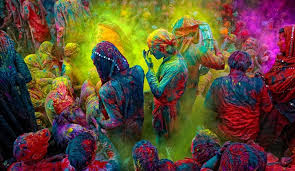LOCKDOWN 3.0 MA SHU KHULSHE JUO MAHITI
The increasing interest in creative education is due to the need for more critical thinkers in business science, politics and every subject to be able to solve complex problems. As the world becomes more interconnected, it is no longer possible to make linear decisions in business and in politics. Current leaders are looking for people who can bring about new ideas to solve pressing issues. For instance, in a 2010 IBM study, Chief Executive Officers from more than 60 countries and 33 different industries worldwide were surveyed on creativity. Those 1,500 CEOs believe that in order for the industries to keep growing in this increasingly complex world, creative strategies must be implemented in education so that these graduating students and future employees are better prepared for massive shifts in industries once they go to workplace] This soft skill of creativity has been identified as a competency for a successful enterprise in the future.
When students have more say in their education, they become more engaged which helps facilitate learning. Plus, the goal of creative education is to challenge each student and encourage originality. Instead of “standardizing” how students approach a problem, different responses would be encouraged. This, in turn, allows more than one type of learner to exist within a classroom.











